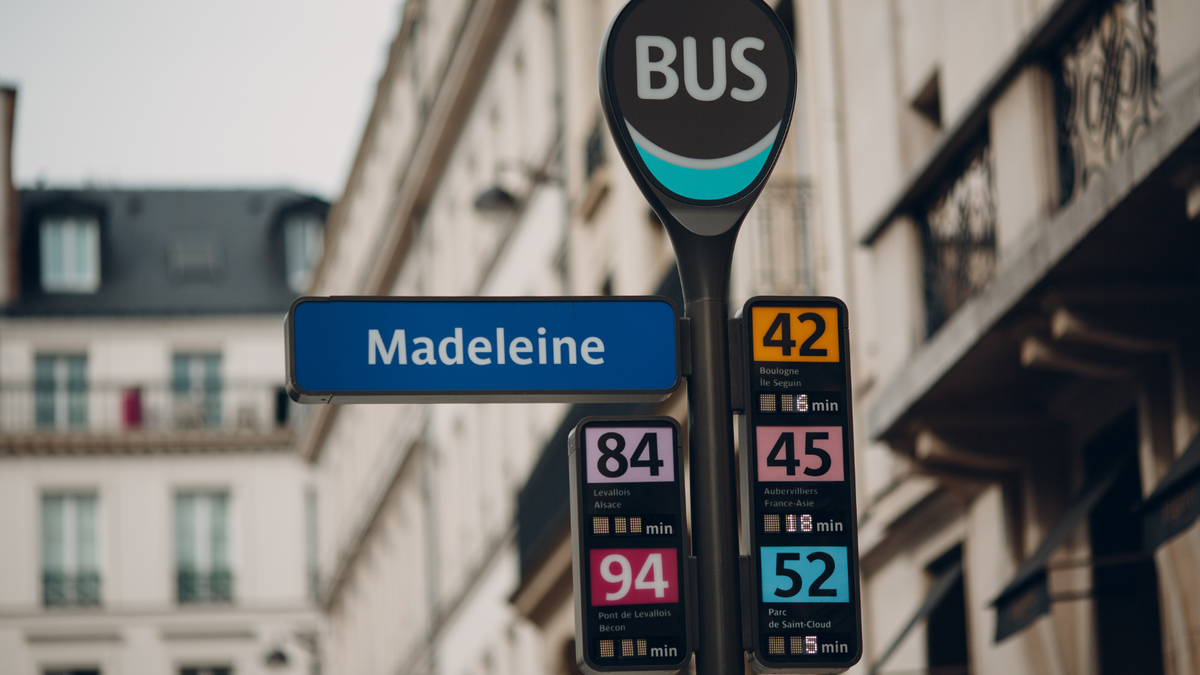Paris Transportation Guide: Getting Around The City Of Light

Traveling to Paris and unsure how to get around the city and the forms of transportation available throughout the city? We've got you covered!
This Paris Transportation guide will help you prepare for your upcoming trip. Paris has a wonderful, and convenient transportation infrastructure set up to mae getting around super easy.
Transportation Types To Get Around Paris
Metro, RER, and Buses In Paris
Metro: The backbone of Parisian public transport, the Metro boasts 16 lines that intricately weave through the city, connecting major landmarks and neighborhoods. With over 300 stations, it's one of the most dense metro networks in the world. A single ride typically costs around €1.90, but for those planning extensive travel, the Paris Visite Pass offers unlimited rides within selected zones, making it a cost-effective choice.
RER Trains: Complementing the Metro, the Réseau Express Régional (RER) serves both the city and its suburbs. Ideal for longer distances, the RER is your ticket to destinations like Versailles or Disneyland Paris. Additionally, the RER B line provides a direct link to Charles de Gaulle Airport, ensuring smooth transitions between air travel and city exploration.
Buses: For areas not covered by the Metro or RER, Paris's comprehensive bus network fills in the gaps. Buses are an affordable and scenic way to traverse the city, offering glimpses of neighborhoods and landmarks you might miss from underground. They operate frequently, especially during peak hours, and are equipped with modern amenities like free Wi-Fi on select routes.
Taxis and Rideshares in Paris
Taxis and Rideshare: While public transportation is efficient, sometimes the convenience of a private ride is unmatched. Taxis are readily available throughout Paris, with designated stands near major attractions and transportation hubs. Alternatively, rideshare services like Uber offer a modern twist, often providing quicker pickups and the ability to track your ride in real-time. However, it's essential to factor in Parisian traffic, which can be particularly congested during rush hours.
Alternative Options To Get Around Paris
Biking with Vélib': For the environmentally conscious traveler, Paris offers the Vélib' bike-sharing system. With thousands of bikes stationed across the city, Vélib' provides a flexible and healthy way to explore. Whether you're cycling along the Seine or navigating the charming backstreets, biking allows for a more intimate experience of Parisian life.
Walking: Sometimes, the best way to soak in the essence of Paris is on foot. The city's compact layout makes it highly walkable, with pedestrian-friendly streets and numerous scenic pathways. Strolling through neighborhoods like Le Marais or Montmartre not only offers delightful discoveries but also reduces reliance on public transport.
Paris Transportation Tips and Ticketing
Ticketing Options: Paris offers a variety of ticketing options tailored to different travel needs. Beyond the Paris Visite Pass, single-journey tickets (t+ tickets) are available for short trips on the Metro, buses, and RER within Paris. For longer stays, the Navigo Week Pass or Navigo Month Pass provide unlimited travel at a discounted rate, covering all zones and modes of transport.
Using Transport Apps: Embracing technology can streamline your Parisian travels. Apps like Citymapper or the official RATP app (Iphone, Android) offer real-time updates, route planning, and service alerts, ensuring you're always informed about the best routes and any potential delays.
Safety and Etiquette: While Paris is generally safe, it's wise to remain vigilant, especially in crowded areas like metro stations. Keep an eye on your belongings and be mindful of local etiquette—standing on the right side of escalators, offering seats to those in need, and keeping noise levels down in public transport spaces contribute to a pleasant experience for everyone.
Best Area In Paris To Stay For Easy Transportation
For tourists, the 1st Arrondissement in Paris is one of the best areas of Paris in terms of transportation options. This central district, home to landmarks like the Louvre and Palais Royal, is highly accessible with several Metro lines converging here, including lines 1, 7, and 14. Line 1 is particularly useful for sightseeing as it runs through many major attractions like the Champs-Élysées and Arc de Triomphe.
Additionally, Châtelet–Les Halles, located in the 1st arrondissement, is one of the largest and most well-connected transportation hubs in Paris. From here, you can access multiple Metro lines, RER trains (including direct routes to Charles de Gaulle Airport and Disneyland), and buses. This makes it an ideal spot for tourists who want quick and easy access to the entire city and beyond.
Other well-connected areas include the Latin Quarter (5th arrondissement) and Saint-Germain-des-Prés (6th arrondissement), both of which provide access to several Metro lines and are great for tourists wanting to stay near cultural and historical sites.
Getting around Paris is a delightful blend of efficiency, convenience, and charm. Whether you choose the speed of the Metro, the flexibility of buses, the comfort of a taxi, or the freedom of biking, the city's transportation network is designed to cater to every traveler's needs. By familiarizing yourself with the options and planning ahead, you can focus on what truly matters—immersing yourself in the magic and beauty that Paris has to offer.
Explore Other Paris Travel Resources
- 2-Days In Paris Travel Itinerary
- The Fanciest Hotels In Paris
- How To Get Around Paris (Transportation Guide)
- Top Attraction In Paris To Visit
- Best Museums In Paris To Visit
- Amount of Money Needed To Visit Paris
- Best Day Trips From Paris
- Best Time Of Year To Visit Paris
- Best Arrondissement In Paris To Stay In
Frequently Asked Questions
What is the best pass for unlimited travel in Paris?
How do I get from Charles de Gaulle Airport to Paris?
Is Paris a walkable city?
How much does a Metro ride cost in Paris?
Can I use Uber in Paris?
Related Post







